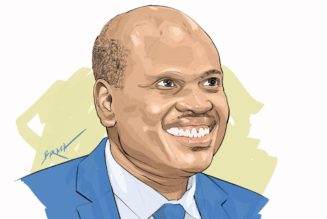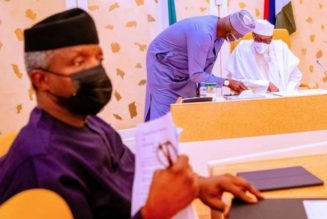Boss Talk
Michael Lusiola: BioVax Institute chief executive on Kenya’s quest to make vaccines locally
Friday November 10 2023

CEO of the Kenya BioVax Institute agency, Michael Lusiola. ILLUSTRATION | JOSEPH BARASA | NMG
The Kenya BioVax Institute, one of the newest State agencies, will be leading the country to realise the dream of locally manufacturing human vaccines.
It is speeding up efforts to have Kenya package vaccines locally in the next four years, the first step to locally manufacturing them.
Business Daily talked with the first substantive CEO of the agency, Michael Lusiola, formerly director of patient safety at AstraZeneca. He spoke on what it will take Kenya in its quest to start local manufacturing of vaccines.
What is the role of the Kenya BioVax Institute?
The agency has two mandates: manufacturing and commercialisation of vaccines, therapeutics and diagnostics. We also work with research institutions like universities and the Kenya Medical Research Institute (Kemri) to commercialise research outputs.
How are vaccines produced?
Vaccine manufacturing happens in two steps, upstream and downstream. Upstream involves research and development around a substance. You have to isolate, test the vaccines, propagate, purify and package them.
Downstream, you bring vaccines in bulk then formulate them, dilute and add preservatives and increase the volumes. For example, think of importing 10 litres of a drug substance and multiplying this to 100, 000 litres. You purify it to become a drug, essentially a vaccine.
How will Kenya undertake vaccine production?
BioVax will start with the fill and finish (packaging) as we build expertise for the upstream. We will be getting the drug substance from a partner then we do formulation, fill and finish.
By 2027 we should be rolling out a drug product for the masses even if for initial testing of the market.
Why 2027 and not any other year?
The 2027 date is key for Kenya because that is the year when the Global Alliance for Vaccines and Immunisation (Gavi) is expected to leave the region and that means Kenya must have a backup.
Gavi and Unicef fund providenabout 88 percent of the vaccines and immunisation programmes in Kenya with the Treasury providing 12 percent.
Without our own facility to at least package vaccines, we are looking at billions of shillings that the Treasury must provide to plug the gap created by the exit of Gavi and Unicef.
Will Kenya’s vaccine production be need-based?
The plan is to have enough vaccines readily available for primary immunisation (childhood). These vaccines are on the list of essential medicines as recommended by the World Health Organisation (WHO).
Are there African nations producing vaccines?
South Africa is ahead in the process while Senegal is also advanced especially in yellow fever vaccines.
This vaccine production journey is being coordinated by the African Centre for Disease Control, where we have 11 countries that are active and Kenya is one of them. Every country should do something different; if Senegal does yellow fever, Kenya should focus on another vaccine.
What are the current vaccine needs for Kenya annually?
We need about 25 million doses of the essential vaccines, and this is going up considering we have newborn babies every year.
Then East Africa needs 200 million doses per year for primary immunisation.
What are some of the anticipated impacts of local vaccine packaging and production?
We will get returns within six to 10 years and a key winner here will be for Treasury. At the moment Treasury spends about Sh4 billion to support the 12 percent of the vaccination programme. Gavi and Unicef spend about Sh32 billion to support the Treasury and their exit means a burden of Sh36 billion on Treasury alone.
You served at AstraZeneca for 16 years. How is this stint helping you as CEO of BioVax Institute?
My time at AstraZeneca helped me build my passion and expertise in highly specialised field as vaccine production.
What are the challenges facing Kenya in the quest to start vaccine production locally?
There are three main problems and one is the financing aspect. Vaccine production is capital-intensive. The regulatory framework also needs to be very well regulated. The third one is about human resources and being a new concept to Kenya, getting the right people locally is a bit of a challenge.
What is the cost of setting up a vaccine production?
From our benchmarking, it will cost about 89 million euros (Sh14.18 billion) to set up a facility with two-filling lines. We will start with two filling lines to adequately support the vaccine needs we have.
Which partners is BioVax counting on to succeed in this journey?
We are expecting very good financial support from the World Bank and WHO technology transfer.
The Bill and Melinda Gates Foundation and the Clinton Health are also supporting us. This support in addition to allocations from Treasury will make BioVax achieve this ambition.









